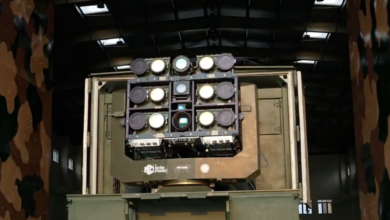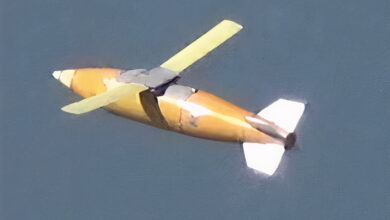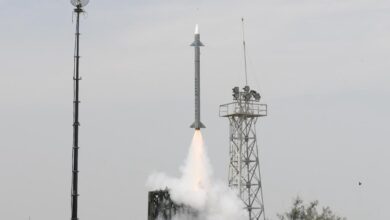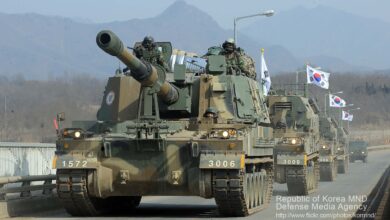What Does India’s Defense Indigenization Mean?
NEW DELHI, INDIA – In another bid to make India self-reliant in military equipment, the country’s Defence Acquisition Council recently approved the procurement of 14 products from start-ups under the Innovation for Defence Excellence (iDEX) program.
The announcement comes almost two years after the Indian defense ministry earmarked $5.2 billion for the design and development of indigenous military equipment.
In the last three years since iDEX was launched, the Indian Ministry of Defence has engaged with 132 start-ups and signed 66 contracts for prototype development, while another 30 contracts are in pipeline to be signed before December.
Just last month, the ministry approved 107 Major Line Replacement Units/Sub-systems for indigenization until December 2026, beyond which there will be an embargo on their import.
Importance of Self-Reliance
Talking to The Defense Post, Saurav Jha, a prominent commentator on energy and security, underlined the importance of India having its own military equipment and defense systems.
“The direction the world is taking and how America is behaving with its sanctions is acting as a catalyst to fast pace indigenization,” said Jha, who runs a podcast called Indigenization Appreciation Hour.
“India cannot always rely on foreign systems if it aspires to be a major power. With foreign sources, there is also a degree of freedom on how it can use weapons; there is also a huge dependency on spares, components, and upgrades, which comes at a fat price,” he added.

Banning Foreign Arms
On April 7, Indian Defence Minister Rajnath Singh released a third negative arms import list of 101 items with timelines in the next five years. This has taken the total number of items on the import ban list to 351.
Singh said the list was released to expedite self-reliance in defense.
“The import of systems, with foreign software codes, can prove to be dangerous for the security apparatus as it opens the window of vulnerability … newer defense systems and platforms are electronic and software-intensive. They can be controlled or subverted from anywhere,” he said.
Own Military Equipment
On April 11, India successfully tested indigenously designed and manufactured loitering munitions at 15,000 feet in the Nubra valley of Ladakh.
These munitions are among the items listed on the “no-import list” and are 40 percent cheaper than the foreign systems.
Another Indian-developed anti-tank guided missile, HELINA, was successfully flight tested at a high altitude on Tuesday, including the hand-over of the first lot of Infantry Protected Mobility Vehicles to the Army Chief the same day.
Teams of #IAF & #IndianArmy, along with @DRDO_India, conducted 2nd successful flight test of indigenously-developed #ATGM #HELINA from an #ALH, today. This is the second successful flight test in successive days.
Press Release: https://t.co/W8Mduy1e1j pic.twitter.com/WJbOkjb4yb— A. Bharat Bhushan Babu (@SpokespersonMoD) April 12, 2022
Pushing Indigenous Defense Procurement
In the last two decades, India has imported 66 percent of its arms from Russia, which accounted for almost $35 billion of the total $54 billion spent on imports.
A report in the Journal of Indo-Pacific Affairs explains that the Indian military currently has 70 to 85 percent Soviet-origin systems. This not only increases India’s dependence on Russian spares but also makes it vulnerable to key strategies.
Jha stressed that manufacturing its own systems is not only important for the country’s industrial complex and economy but also for sending a geopolitical message.
Considering the situation in Russia and Ukraine, and India’s dependency on both the countries for spares, it is all the more important to speed up private sector-led design and development of defense projects.
“Foreign weapons and systems come laden with software and hardware trojans,” said Jha.
“These imports do not do justice to Indian transition and if India wants to fight wars of its own choosing, it is highly important to have reliable systems,” Jha said, adding that manufacturing its own systems is also highly important for the geopolitics and economics of India in the current times.

Drivers and Cons of ‘Indigenous’ Strategy
The driver of the indigenous approach has been from the top-down but despite all the efforts, there are concerns about how quickly the domestic systems can be made successful.
Due to increased foreign policy and the US’ Countering America’s Adversaries Through Sanctions Act, there is a need to boost the capability of the small start-up companies in niche areas.
To address this, the Indian government’s Defence Research and Development Organisation (DRDO) has been transferring niche defense technologies to industries.
“DRDO has entered into more than 1,430 Transfer of Technology [ToTs] Agreements with the industries all over the country, out of which a record number of around 450 ToTs have been signed-in last two years,” told Dr. N. Ranjana, Director at the Directorate of Systems and Technology Analysis at the DRDO, to The Defense Post.Teja
“This shows the increasing confidence of industries in homegrown technologies. Some of these industries have now become a part of the global supply chain,” he added.
While the Indian defense ministry has brought in key changes in terms of the shortened procurement cycle, faster contracts, and minimum bureaucracy, experts believe that there are still areas that need to be addressed.
“HAL Tejas variant is a brilliant light combat fighter and so are the [Advanced Towed Artillery Gun Systems] with a firing range of 48 kilometers [30 miles] but we need to keep an eye on the other orders,” said Jha.
“While the systems look impressive on paper, they should be as capable in reality too. The most important content in these systems would be that the minimum order quantities are large enough for the industries.”












